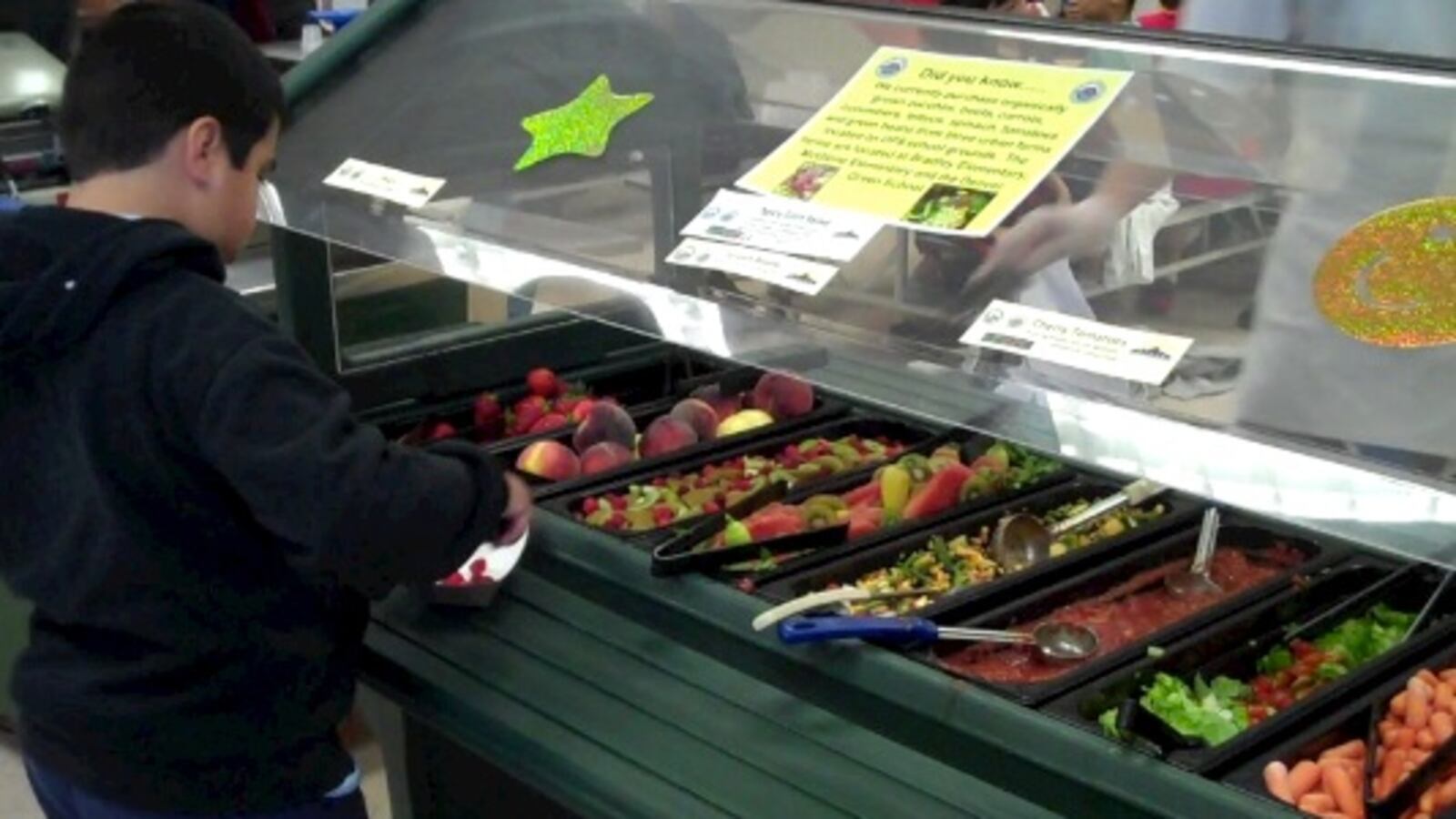More kids eat school meals when salad bars are added, according to a recent evaluation of a program that provides free salad bars to schools nationwide. The evaluation of the “Let’s Move Salad Bars to Schools” campaign found that 57 percent of schools reported an increase in school meal participation and 78 percent reported using the salad bars every day.
Since it launched in 2010, the campaign has donated 3,456 salad bars to schools in 49 states, including 148 in Colorado. Currently, there are 555 schools on the waiting list, including two in Colorado. The free bars are available to any school district participating in the National School Lunch Program.
The goal of “Let’s Move Salad Bars to Schools,” which supports First Lady Michelle Obama’s “Let’s Move” anti-obesity effort, is to ensure every school in the country has a salad bar as part of its school meal program. Only about 17 percent of U.S. schools offer salad bars to students daily, according to a 2012 analysis by the United States Department of Agriculture.
The recent evaluation, conducted by the Gretchen Swanson Center for Nutrition, found that very few schools had stopped using the salad bars after receiving them and that 78 percent were buying more fruits and vegetables since they got the bars. On average, the schools surveyed served 51 percent low-income students.
The survey also found that at some schools salad bars come with a few logistical wrinkles. Nearly a quarter of respondents said the bars increased the amount of time it took students to get through the lunch line. In addition, 27 percent of schools reported an increase in labor hours after the addition of the salad bars.
“Let’s Move Salad Bars to Schools” was founded by United Fresh Foundation, the National Fruit and Vegetable Alliance, Whole Foods Market and the Food Family Farming Foundation, which is led by Ann Cooper, director of nutrition services for the Boulder Valley School District.


